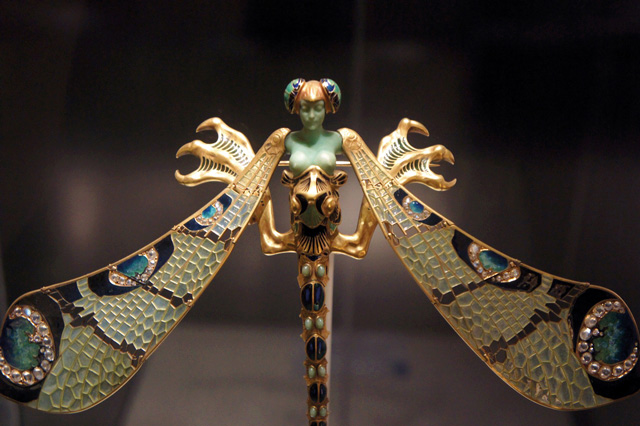Art Column
Antique Brand Jewelry, the FINESSE DISTILLED in TIME
Ravenel Quarterly No. 26 Autumn 2018 / 2018-09-21

From European aristocrats to wealthy families in America, the precious stones are in the habit of being disassembled and rebuilt by artisans, especially in the occasions of gift or tribute. The renowned «Regent Diamond», for example, was embedded on the crown of Louis XV, the hat of Marie Antoinette, the coronation sword of Napoléon I, and then the crown of the queen of Napoléon III.
The artisans commissioned to rebuild these jewelries were, indeed, famous creators. Some of the distinguished establishments were created by them, and continue to shine until this day. Such as the royal jeweler of Marie Antoinette, Marie-Étienne Nitot, who would establish the house of Chaumet. The atelier of Mellerio dits Meller, frequented by generations of French royal families in Versailles, can even trace its root up to a permission of trade published exclusively for the brand in 1613 by Queen Marie de Medicis. However, artisans at the time were contracted by the nobles to disassemble and rebuild, in order to conform their specific social needs, and as the result, the craft itself was not to last. The antique jewelries which remain to our days, consequently, are even more valuable then it would seem.
The value of antique jewelries lies in the time-proofed aesthetics and precious materials, yet in the case of later creations, it was centered more acutely of the design quality. As we can see in the brands established in the 19th and 20th centuries: Bulgari, Cartier, Van cleef & Arpels, etc., albeit their services rendered as tradition for the nobles of the world, yet they participated, on the other hand, the Art Deco trend in the beginning of 20th century, as well as the artistic styles after the Great War up until the 80’. The art of jewelry started being seen as it is, an art. Those many creations made by master designers and represent the spirit *à l’époque*, are claiming their place alongside traditional royal jewellery within the contemporary collections and auctions.
According to a report by Art Market Research, whether it’s antique, Art Deco or post-war design, jewelry has a healthy potential of increasing the value. The ten-year increase of each categories are 63%, 93% and 73%, which is competitive to other categories like cars, watches, wines, stamps and coins. With this trend, many auction houses would organize many occasions dedicated to the jewelries. Seen by the actual numbers, the antique jewelries could represent a potential that exceeds the expectation of the auction houses: in 2015, Bonhams estimated the price of one gold twist necklace designed by Gabrielle «Coco» Chanel as from US$ 5,500 to US$ 8,200 dollars, with the final price of an astounding US$ 94,000; Sotheby’s Hong Kong sold a set of signed design jewelry by Bulgari three times of the estimated price; an auction held by Doyle’s in New York with creations across generations sold a total sum of 6.16 million dollars, far beyond the estimated US$ 3.27 - US$ 4.91 million.
In recent years, this trend has well influenced the Asian market. According to a report of 2014-15, the proportion of investment in jewelries and precious stones by Chinese wealthy buyers have reached 45%. Among which, due to the rarity and the aesthetic value added by the renowned masters, the antique brand jewelries are well regarded as possessing the collection value as well as the investment value beyond time.
